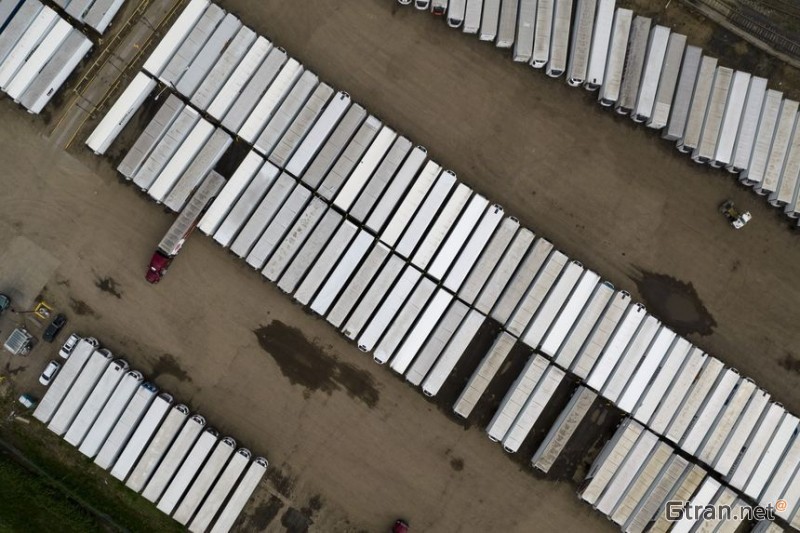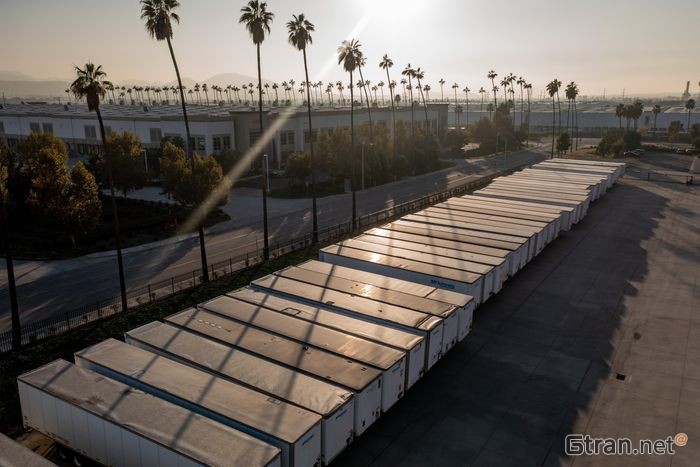More truck trailers and shipping containers are being used as mobile warehouses, the latest sign of ad hoc adjustments in strained supply chains

Retailers and manufacturers continue to reset distribution operations on the fly to keep supply chains running amid transportation network disruption and difficulties forecasting demand.
Companies flush with inventories and straining for warehouse space are increasingly turning to ad hoc arrangements that include storing goods in parking lots and on truck trailers as they cope with an ongoing disconnect between supply and demand.
The tactic is aimed at keeping supply chains nimble, experts say, and allowing companies to put off potentially costly commitments to new storage capacity amid uncertainty in the U.S. economy and sharp changes in consumer buying patterns.
“It’s scalable, and it’s mobile, and it’s accessible,” said Chuck Cannata, executive vice president and general manager of St. Charles, Mo.-based transportation equipment lessor Milestone Equipment Holdings LLC, which has seen more demand from companies to use trailers for storage over the past two years.
“You can move that to a retail distribution center or a store without having to touch the inventory two or three times,” Mr. Cannata said.
The overflow strategy is the latest sign of how retailers and manufacturers are continuing to reset their distribution operations on the fly to keep supply chains running amid disruption in transportation networks and difficulties in forecasting demand.
Companies are looking for space in a highly squeezed warehouse market, with vacancy rates in some major distribution markets dropping into the low single digits and leasing costs rising. Real-estate services firm JLL said in a report released this month that average rental rates across the U.S. for industrial properties in the second quarter surpassed $8 a square foot, 21% ahead of the same quarter last year.

Shipping experts say keeping goods on transport equipment ties up shipping containers, truck trailers and truck frames, adding to supply chain strains.
But shipping experts say the practice of keeping goods on transport equipment adds to broader strains in already-stressed supply chains because it ties up shipping containers, truck trailers and the truck frames needed to keep goods moving, making it tougher for trucking companies and ocean carriers to get the equipment they need at the right place and the right time.
“When a trailer is being used for storage, it can’t be used for transporting other goods,” said Lisa Ellram, a professor of supply chain management at the Miami University Farmer School of Business in Oxford, Ohio.
Some retailers, including Target Corp. and Macy’s Inc., are cutting prices to get rid of their excess inventories as quickly as possible. Others are holding on to late-arriving goods for future sales or are diverting shipments to off-price retailers like Ross Stores Inc. and Burlington Stores Inc., which pushes the inventory-management issues off to other companies.
Joe Trusner, executive sales director at Total Quality Logistics LLC, said the Cincinnati-based freight broker’s revenue from providing drop trailers, which are truck trailers that are unhooked and left with shippers, was up 849% in the first half of this year compared with the same period in 2020.
He said one retailer that received Christmas goods too late for last year’s holiday season has stored the merchandise this year in more than 50 trailers at secured yards across the country.
Shippers leasing short-term warehouse space are also asking about storing trailers in those properties’ parking lots, said Karl Siebrecht, chief executive of Seattle-based Flexe Inc., which connects businesses to warehouses with extra storage space.
“It’s kind of one of the tricks in the bag, if you will, for temporary short-term. ‘Hey, can I just park some of my trailers somewhere until I can get some of this pile of inventory moving down the supply chain?’” Mr. Siebrecht said. “We get asked that a lot.”
For some big retailers with their own trucking fleets, the ad hoc storage strategy simply extends an ongoing strategy to use trailers to stow inventory during normal seasonal surges.
“They plan on it because they know that stock is going to go away pretty quickly and it’s not worth building out a whole lot of capacity with a distribution center,” said Dr. Ellram.


